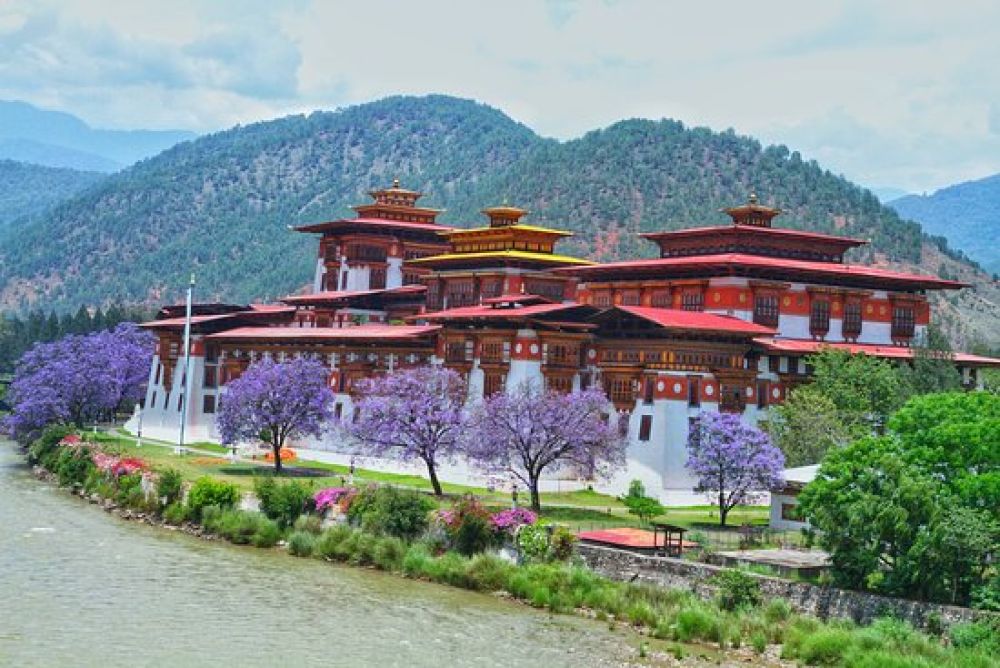

Punakha Dzong, also known as Pungthang Dewachen Phodrang or "the palace of great happiness or bliss," is one of the most beautiful and important Dzongs in Bhutan. Situated at the confluence of the Pho Chhu and Mo Chhu rivers, it is the second oldest and second-largest Dzong in Bhutan. Constructed by Zhabdrung Ngawang Namgyal, the unifier of Bhutan, in 1637-38, it stands as a testament to the architectural magnificence in the heart of Punakha.
The Dzong served as the administrative center and the seat of the Government of Bhutan until the capital was moved to Thimphu in 1955. It is still the winter residence of the Dratshang Lhentshog (the Central Monastic Body) and holds a profound historical significance in the country's religious and political history. The Dzong is associated with important historical events, including the coronation of Ugyen Wangchuck, the first King of Bhutan in 1907, and the location for the drafting of Bhutan's first constitution in 2008.
The history of tourism at Punakha Dzong is relatively recent. Bhutan cautiously opened its doors to foreign visitors in the 1970s, introducing a high-value, low-impact tourism policy aimed at preserving the nation's rich cultural heritage and natural environment. The Dzong became one of the focal points of cultural tourism in Bhutan, attracting visitors who are interested in the country's unique architectural styles, religious festivals, and breathtaking landscapes.
One of the highlights that draw tourists to Punakha Dzong is the annual Punakha Tshechu, a religious festival featuring masked dances and historical re-enactments which provides a deep insight into Bhutanese culture. The Dzong's exquisite structure with its intricate woodworks and artistic murals also make it a favorite subject for photography among tourists.
In keeping up with the global tourism trends and Bhutan's sustainable tourism philosophy, Punakha Dzong and its surrounding areas have become centers for eco-tourism and cultural immersion. Tourists are increasingly seeking authentic experiences, such as village homestays, guided meditation, and nature treks.
Modern trends also indicate a growth in spiritual tourism, with visitors coming to Punakha Dzong to find a peaceful retreat and learn more about Buddhism. The Dzong's serene ambiance, coupled with the picturesque landscape around Punakha valley, offers a captivating spiritual environment.
Furthermore, adventure tourism is on the rise, with the rivers near Punakha Dzong offering opportunities for white-water rafting and kayaking, complementing the cultural visits and appealing to a broader range of tourists.
Looking into the future, Punakha Dzong is poised to continue being a key destination in Bhutan's tourism landscape. Preservation efforts are consistently implemented to maintain the Dzong's structural integrity and cultural relevance. With a continuous commitment to sustainable and responsible tourism, Punakha Dzong is expected to uphold its standing as a premier attraction, allowing visitors to experience the heart of Bhutanese tradition and natural splendor for many years to come.